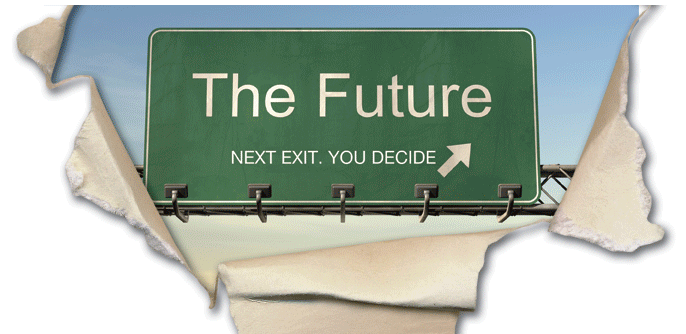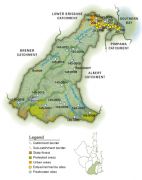
Logan and Albert Conservation Association


There are two main themes Green economy in the context of sustainable development and poverty eradication and the institutional framework needed.
Australia is a member state and you can see what our country has done here.
At a South East Queensland non government organization level LACA has participated at a FOSEQ (Friends of South East Queensland) workshop to present our concerns that will be taken to RIO. Several members of Australia's UN bodies also attended. There is a Queensland / Brisbane branch of the United Nations if you want more information or wish to become involved. FOSEQ is based on the principles of the UN Earth Charter.
Although an international conference might seem remote from us in SEQ Logan and Scenic Rim your thoughts and vision are wanted and internet makes that conversation quite easy. See what others have contributed already here and submit your own. Of course LACA would be delighted for you to tell us so that we can make a link on our website.
Sustainablity is the key term - what does it mean? It was first defined in 1992. Sustainability calls for a decent standard of living for everyone today without compromising the needs of future generations - a challenging goal. This writer agrees with the wise words of David Suzuki "We have failed to address the fundamental truth that endless growth is imposible in a finite world". In addition our human population is the elephant in the room.
A future worth choosing must be based on true costs to people and the environmentstate the UN's "Resilient People, Resilient Planet: A Future Worth Choosing" report
Logan City Council media release highlights some key areas of concern where there are differences - such as the planning process, provision of parks, employment land, environmental features, local trunk roads and public transport, the infrastructure plan and the implementation strategy.
Both draft schemes still require detailed infrastructure analysis and implementation actions and Council welcomes the opportunity to help inform the drafting of these according to planning chairperson Cr Daley. Infrastructure, including main roads, public transport, schools, community facilities, emergency services and hospitals are much-needed in both of these areas and are integral for these model cities to progress.
Council will continue to support the work being undertaken by the ULDA on the proviso of the adequate and timely provision of infrastructure such as roads and schools.
The words we speak and language we use can often be confusing and misleading. Identified Growth Areas is the expression being used in the current SEQRP - replacing the language used in the earlier SEQRP.
Identified Growth Areas are areas to be INVESTIGATED BEFORE any development is allowed to happen in the future.
The language of planners is not the language of the average citizen. If there is a glossary please check. If you attend any so-called consultations - please ask for explanations.
Under the South East Queensland Regional Plan SEQRP 2009 - 2031 the identified growth areas were listed (see109 of SEQRP 2009 - 2031) as
- New Beith - Round Mountain
- Beaudesert south
- Greater Bromelton
- North Maclean
- Greenbank ( east)
- Yarrabilba
- Greater Flagstone ( in Flagstone South only )
The term Greater Flagstone was indicative of the area which had not then been included in the urban footprint to that point in time' It did not include all 4 areas currently included in proposed UDA which we are now have opportunity to make submissions about - until 20 May 2011
 SEQ environment groups warn of the looming threat to Moreton Bay from the sheer scale of proposed urban development throughout the region. Over a decades worth of achievements could be undone if the massive new unsustainable urban development throughout SEQ is allowed to occur with out having to fully consider and put in place measures to avoid impacts to waterways.
SEQ environment groups warn of the looming threat to Moreton Bay from the sheer scale of proposed urban development throughout the region. Over a decades worth of achievements could be undone if the massive new unsustainable urban development throughout SEQ is allowed to occur with out having to fully consider and put in place measures to avoid impacts to waterways.
Large-scale catchment wide rehabilitation projects and the adoption of world's best development standards in the vicinity of one billion dollars needs to be invested to repair catchment degradation throughout the region; otherwise the ecological health of Moreton Bay is likely to continue to decline overtime.
Another F for fail for the Logan River Estuary surely should mean that all levels of government should be aware of the damage our present human activites is causing and business as usual - despite the rhetoric - will not reverse the degradation.The southern Moreton Bay Ramsar site is also in poor health.
'The 2010 report card shows the condition of the Albert and Logan estuaries remain in poor condition, despite over ten years of hard work to improve their ecological health. The poor estuary health is caused by high nutrient and sediment levels, which is continued to be caused by existing inappropriate urban and industrial development throughout the catchment. Impacts to waterways are set to escalate if a business as usual approach is taken to the massive urban development planned for our part of the region.
When will the political will change to work towards a healthy catchment and ecosystem whose value for longterm human survival is essential. Without a healthy ecosystem [planet] we will not have a healthy sustainable lifestyle.
Queensland Conservation Association released their comment in this media release. QCC_healthywaterwaysreportcard20oct.doc Bytes 01/01/1970, 10:00
QCC_healthywaterwaysreportcard20oct.doc Bytes 01/01/1970, 10:00